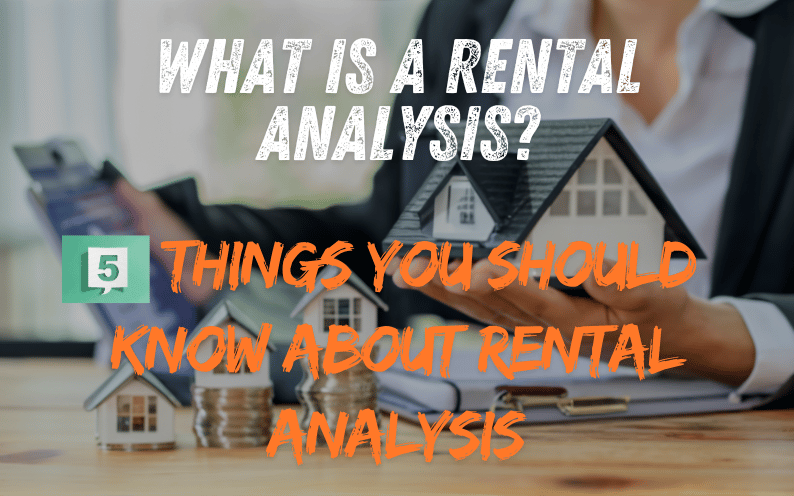A rental analysis is an essential tool for property owners, investors, and managers. It helps in understanding the rental market, setting competitive prices, and maximizing returns. Whether you’re new to real estate or a seasoned investor, understanding the nuances of rental analysis can significantly impact your success. Rental analysis involves evaluating various factors to determine the optimal rental price for a property. This process includes assessing the property’s location, size, condition, and amenities, as well as comparing it to similar properties in the area. The goal is to set a rent that attracts tenants while ensuring profitability.
In this blog, we will delve into what rental analysis entails, why it is crucial, the key components involved, how to conduct it effectively, and common mistakes to avoid. By the end of this article, you’ll have a comprehensive understanding of rental analysis and how it can benefit your real estate endeavors.
What is Rental Analysis?
Rental analysis involves evaluating various factors to determine the optimal rental price for a property. This includes assessing the property’s location, size, condition, and amenities, as well as comparing it to similar properties in the area. The goal is to set a rent that attracts tenants while ensuring profitability. A comprehensive rental analysis considers various data points, including recent rental rates for similar properties, occupancy rates, and market trends. It also involves an in-depth look at the property itself, considering factors such as its age, condition, and any unique features that might add value. By combining these elements, property owners can set a rental price that maximizes their return on investment while remaining attractive to potential tenants.
Why is Rental Analysis Important?
Rental analysis service is crucial for making informed decisions. It helps property owners avoid underpricing or overpricing their rentals. Accurate rental analysis ensures that the property remains competitive in the market, attracting quality tenants and minimizing vacancy periods. By conducting a thorough rental analysis, property owners can identify the optimal rental price that balances profitability with market competitiveness. This analysis also helps in forecasting future rental income, budgeting for maintenance and repairs, and planning for long-term investment strategies. Without a proper rental analysis, property owners risk financial instability, prolonged vacancies, and tenant dissatisfaction.
Key Components of Rental Analysis
Several key components make up a comprehensive rental analysis:
- Market Research: Understanding the local rental market trends.
- Comparable Properties: Analyzing similar properties in the area.
- Property Condition: Assessing the condition and features of the property.
- Location: Considering the neighborhood and proximity to amenities.
- Rental Income and Expenses: Calculating potential income and expenses to determine profitability.
Market research involves collecting data on current rental rates, occupancy rates, and demand for rental properties in the area. This information provides a baseline for setting competitive rental prices. Analyzing comparable properties helps in understanding what similar properties are renting for and identifying any unique selling points that could justify a higher rent.
How to Conduct a Rental Analysis?
Conducting a rental analysis involves several steps:
- Research: Gather data on local market trends and comparable properties.
- Evaluate: Assess the property’s condition, features, and location.
- Calculate: Determine the potential rental income and expenses.
- Adjust: Make adjustments based on current market conditions and property specifics.
- Set Rent: Establish a competitive and profitable rental rate.
Start by researching the local rental market to understand current trends and demand. Evaluate the property’s condition, features, and location to identify any factors that might impact its rental value. Calculate potential rental income by comparing the property to similar rentals in the area and factoring in expenses such as maintenance, taxes, and insurance. Make adjustments based on current market conditions and property specifics, and finally, set a rental rate that is competitive yet profitable.
Common Mistakes in Rental Analysis
Avoiding common mistakes can improve the accuracy of your rental analysis services:
- Ignoring Market Trends: Not staying updated with market trends can lead to incorrect pricing.
- Overlooking Property Condition: Failing to consider the property’s condition can affect tenant satisfaction.
- Inaccurate Comparables: Using incorrect or outdated comparable properties can skew your analysis.
- Neglecting Expenses: Overlooking expenses can lead to unexpected financial shortfalls.
Ignoring market trends can result in setting rental prices that are too high or too low, affecting occupancy rates and profitability. Overlooking the property’s condition can lead to dissatisfied tenants and increased turnover rates. Using inaccurate comparables can skew the analysis, leading to incorrect pricing decisions. Neglecting expenses can cause financial shortfalls, impacting the overall profitability of the rental property.
Conclusion
Rental analysis is a critical aspect of property management and investment. By understanding its importance and how to conduct it effectively, you can set competitive rental prices, attract quality tenants, and maximize your investment returns. Avoiding common mistakes ensures your rental analysis remains accurate and beneficial.
For expert property management services in San Mateo, trust PMI Bay Property Management. Our team offers comprehensive rental analysis and tailored solutions to help you maximize your rental property’s potential. Contact us today to learn more and schedule a consultation. Let us take the hassle out of property management and ensure your investment thrives!


